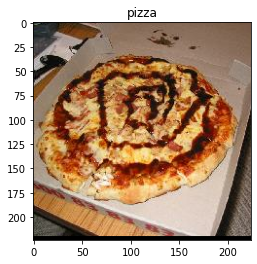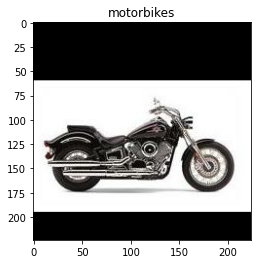导入函数库
import tensorflow as tf
import numpy as np
import tensorflow_datasets as tfds # 这个是指Tensorflow Datasets
import matplotlib.pyplot as plt
定义网络结构
一些参数设置
layers = tf.keras.layers
models = tf.keras.models
定义InceptionV3模型用于caltech101物体分类
def conv2d_bn(x,
filters,
num_row,
num_col,
padding='same',
strides=(1, 1),
name=None):
if name is not None:
bn_name = name + '_bn'
conv_name = name + '_conv'
else:
bn_name = None
conv_name = None
bn_axis = 3
x = layers.Conv2D(
filters, (num_row, num_col),
strides=strides,
padding=padding,
use_bias=False,
name=conv_name)(x)
x = layers.BatchNormalization(axis=bn_axis, scale=False, name=bn_name)(x)
x = layers.Activation('relu', name=name)(x)
return x
def InceptionV3(input_shape=(224, 224, 3)):
img_input = layers.Input(shape=input_shape)
channel_axis = 3
x = conv2d_bn(img_input, 32, 3, 3, strides=(2, 2), padding='valid')
x = conv2d_bn(x, 32, 3, 3, padding='valid')
x = conv2d_bn(x, 64, 3, 3)
x = layers.MaxPooling2D((3, 3), strides=(2, 2))(x)
x = conv2d_bn(x, 80, 1, 1, padding='valid')
x = conv2d_bn(x, 192, 3, 3, padding='valid')
x = layers.MaxPooling2D((3, 3), strides=(2, 2))(x)
# mixed 0: (None, 25, 25, 256)
branch1x1 = conv2d_bn(x, 64, 1, 1)
branch5x5 = conv2d_bn(x, 48, 1, 1)
branch5x5 = conv2d_bn(branch5x5, 64, 5, 5)
branch3x3dbl = conv2d_bn(x, 64, 1, 1)
branch3x3dbl = conv2d_bn(branch3x3dbl, 96, 3, 3)
branch3x3dbl = conv2d_bn(branch3x3dbl, 96, 3, 3)
branch_pool = layers.AveragePooling2D((3, 3),
strides=(1, 1),
padding='same')(x)
branch_pool = conv2d_bn(branch_pool, 32, 1, 1)
x = layers.concatenate(
[branch1x1, branch5x5, branch3x3dbl, branch_pool],
axis=channel_axis,
name='mixed0')
# mixed 1: (None, 25, 25, 288)
branch1x1 = conv2d_bn(x, 64, 1, 1)
branch5x5 = conv2d_bn(x, 48, 1, 1)
branch5x5 = conv2d_bn(branch5x5, 64, 5, 5)
branch3x3dbl = conv2d_bn(x, 64, 1, 1)
branch3x3dbl = conv2d_bn(branch3x3dbl, 96, 3, 3)
branch3x3dbl = conv2d_bn(branch3x3dbl, 96, 3, 3)
branch_pool = layers.AveragePooling2D((3, 3),
strides=(1, 1),
padding='same')(x)
branch_pool = conv2d_bn(branch_pool, 64, 1, 1)
x = layers.concatenate(
[branch1x1, branch5x5, branch3x3dbl, branch_pool],
axis=channel_axis,
name='mixed1')
# mixed 2: (None, 25, 25, 288)
branch1x1 = conv2d_bn(x, 64, 1, 1)
branch5x5 = conv2d_bn(x, 48, 1, 1)
branch5x5 = conv2d_bn(branch5x5, 64, 5, 5)
branch3x3dbl = conv2d_bn(x, 64, 1, 1)
branch3x3dbl = conv2d_bn(branch3x3dbl, 96, 3, 3)
branch3x3dbl = conv2d_bn(branch3x3dbl, 96, 3, 3)
branch_pool = layers.AveragePooling2D((3, 3),
strides=(1, 1),
padding='same')(x)
branch_pool = conv2d_bn(branch_pool, 64, 1, 1)
x = layers.concatenate(
[branch1x1, branch5x5, branch3x3dbl, branch_pool],
axis=channel_axis,
name='mixed2')
# mixed 3: (None, 12, 12, 768)
branch3x3 = conv2d_bn(x, 384, 3, 3, strides=(2, 2), padding='valid')
branch3x3dbl = conv2d_bn(x, 64, 1, 1)
branch3x3dbl = conv2d_bn(branch3x3dbl, 96, 3, 3)
branch3x3dbl = conv2d_bn(
branch3x3dbl, 96, 3, 3, strides=(2, 2), padding='valid')
branch_pool = layers.MaxPooling2D((3, 3), strides=(2, 2))(x)
x = layers.concatenate(
[branch3x3, branch3x3dbl, branch_pool],
axis=channel_axis,
name='mixed3')
# mixed 4: (None, 12, 12, 768)
branch1x1 = conv2d_bn(x, 192, 1, 1)
branch7x7 = conv2d_bn(x, 128, 1, 1)
branch7x7 = conv2d_bn(branch7x7, 128, 1, 7)
branch7x7 = conv2d_bn(branch7x7, 192, 7, 1)
branch7x7dbl = conv2d_bn(x, 128, 1, 1)
branch7x7dbl = conv2d_bn(branch7x7dbl, 128, 7, 1)
branch7x7dbl = conv2d_bn(branch7x7dbl, 128, 1, 7)
branch7x7dbl = conv2d_bn(branch7x7dbl, 128, 7, 1)
branch7x7dbl = conv2d_bn(branch7x7dbl, 192, 1, 7)
branch_pool = layers.AveragePooling2D((3, 3),
strides=(1, 1),
padding='same')(x)
branch_pool = conv2d_bn(branch_pool, 192, 1, 1)
x = layers.concatenate(
[branch1x1, branch7x7, branch7x7dbl, branch_pool],
axis=channel_axis,
name='mixed4')
# mixed 5, 6: (None, 12, 12, 768)
for i in range(2):
branch1x1 = conv2d_bn(x, 192, 1, 1)
branch7x7 = conv2d_bn(x, 160, 1, 1)
branch7x7 = conv2d_bn(branch7x7, 160, 1, 7)
branch7x7 = conv2d_bn(branch7x7, 192, 7, 1)
branch7x7dbl = conv2d_bn(x, 160, 1, 1)
branch7x7dbl = conv2d_bn(branch7x7dbl, 160, 7, 1)
branch7x7dbl = conv2d_bn(branch7x7dbl, 160, 1, 7)
branch7x7dbl = conv2d_bn(branch7x7dbl, 160, 7, 1)
branch7x7dbl = conv2d_bn(branch7x7dbl, 192, 1, 7)
branch_pool = layers.AveragePooling2D(
(3, 3), strides=(1, 1), padding='same')(x)
branch_pool = conv2d_bn(branch_pool, 192, 1, 1)
x = layers.concatenate(
[branch1x1, branch7x7, branch7x7dbl, branch_pool],
axis=channel_axis,
name='mixed' + str(5 + i))
# mixed 7: (None, 12, 12, 768)
branch1x1 = conv2d_bn(x, 192, 1, 1)
branch7x7 = conv2d_bn(x, 192, 1, 1)
branch7x7 = conv2d_bn(branch7x7, 192, 1, 7)
branch7x7 = conv2d_bn(branch7x7, 192, 7, 1)
branch7x7dbl = conv2d_bn(x, 192, 1, 1)
branch7x7dbl = conv2d_bn(branch7x7dbl, 192, 7, 1)
branch7x7dbl = conv2d_bn(branch7x7dbl, 192, 1, 7)
branch7x7dbl = conv2d_bn(branch7x7dbl, 192, 7, 1)
branch7x7dbl = conv2d_bn(branch7x7dbl, 192, 1, 7)
branch_pool = layers.AveragePooling2D((3, 3),
strides=(1, 1),
padding='same')(x)
branch_pool = conv2d_bn(branch_pool, 192, 1, 1)
x = layers.concatenate(
[branch1x1, branch7x7, branch7x7dbl, branch_pool],
axis=channel_axis,
name='mixed7')
# mixed 8: (None, 5, 5, 1280)
branch3x3 = conv2d_bn(x, 192, 1, 1)
branch3x3 = conv2d_bn(branch3x3, 320, 3, 3,
strides=(2, 2), padding='valid')
branch7x7x3 = conv2d_bn(x, 192, 1, 1)
branch7x7x3 = conv2d_bn(branch7x7x3, 192, 1, 7)
branch7x7x3 = conv2d_bn(branch7x7x3, 192, 7, 1)
branch7x7x3 = conv2d_bn(
branch7x7x3, 192, 3, 3, strides=(2, 2), padding='valid')
branch_pool = layers.MaxPooling2D((3, 3), strides=(2, 2))(x)
x = layers.concatenate(
[branch3x3, branch7x7x3, branch_pool],
axis=channel_axis,
name='mixed8')
# mixed 9: (None, 5, 5, 2048)
for i in range(2):
branch1x1 = conv2d_bn(x, 320, 1, 1)
branch3x3 = conv2d_bn(x, 384, 1, 1)
branch3x3_1 = conv2d_bn(branch3x3, 384, 1, 3)
branch3x3_2 = conv2d_bn(branch3x3, 384, 3, 1)
branch3x3 = layers.concatenate(
[branch3x3_1, branch3x3_2],
axis=channel_axis,
name='mixed9_' + str(i))
branch3x3dbl = conv2d_bn(x, 448, 1, 1)
branch3x3dbl = conv2d_bn(branch3x3dbl, 384, 3, 3)
branch3x3dbl_1 = conv2d_bn(branch3x3dbl, 384, 1, 3)
branch3x3dbl_2 = conv2d_bn(branch3x3dbl, 384, 3, 1)
branch3x3dbl = layers.concatenate(
[branch3x3dbl_1, branch3x3dbl_2], axis=channel_axis)
branch_pool = layers.AveragePooling2D(
(3, 3), strides=(1, 1), padding='same')(x)
branch_pool = conv2d_bn(branch_pool, 192, 1, 1)
x = layers.concatenate(
[branch1x1, branch3x3, branch3x3dbl, branch_pool],
axis=channel_axis,
name='mixed' + str(9 + i))
inputs = img_input
outputs = x
# Create model.
model = models.Model(inputs, outputs, name='inception_v3')
return model
pre_trained_model = InceptionV3()
x = layers.GlobalAveragePooling2D()(pre_trained_model.output)
x = layers.Dense(512, activation='relu', name='fc1')(x)
x = layers.Dense(102, activation='softmax', name='predictions')(x)
model = models.Model(pre_trained_model.input, x)
# Load weights.
weights_path = './models/inceptionv3.h5'
model.load_weights(weights_path)
模型训练日志记录
log_dir = './logs'
tensorboard_callback = tf.keras.callbacks.TensorBoard(log_dir=log_dir, histogram_freq=1)
进行数据增强
def convert(image, label):
image = tf.image.convert_image_dtype(image, tf.float32) # Cast and normalize the image to [0,1]
image = tf.image.resize_with_crop_or_pad(image, 256, 256)
image = tf.image.random_crop(image, size=[224, 224, 3]) # Random crop back to 224x224
return image, label
def augment(image, label):
image, label = convert(image, label)
image = tf.image.random_flip_left_right(image)
image = tf.image.random_flip_up_down(image)
image = tf.image.random_brightness(image, max_delta=0.3) # Random brightness
return image, label
数据读取并预处理
# 此处使用tfds的方式构建data pipeline
(raw_test, raw_train), metadata = tfds.load(
'caltech101', # 数据集名称,这个是caltech101分类数据集,共102个类别(包含background类别)
split=['test', 'train'], # 这里的raw_test和split的'test'对应,raw_train和split的'train'对应
with_info=True, # 这个参数和metadata对应
as_supervised=True, # 这个参数的作用是返回tuple形式的(input, label),举个例子,raw_test=tuple(input, label)
data_dir='./tensorflow_datasets'
)
BATCH_SIZE = 4
SHUFFLE_BUFFER_SIZE = 3060 # 原始train_num=3060,把整个数据集加载进内存进行shuffle,效果更好
# 可以体验下这里是否加prefetch(tf.data.experimental.AUTOTUNE)和cache()的区别,对训练速度,以及CPU负载有影响
train_batches = raw_train.shuffle(SHUFFLE_BUFFER_SIZE).map(augment).batch(BATCH_SIZE).prefetch(tf.data.experimental.AUTOTUNE)
test_batches = raw_test.map(convert).batch(BATCH_SIZE)
进行模型训练
model.compile(optimizer=tf.keras.optimizers.Adam(learning_rate=1e-5),
loss=tf.keras.losses.SparseCategoricalCrossentropy(from_logits=True),
metrics=['accuracy'])
model.fit(
train_batches,
epochs=5,
callbacks=[tensorboard_callback]
)
Epoch 1/5
765/765 [==============================] - 31s 41ms/step - loss: 3.8264 - accuracy: 0.8196
Epoch 2/5
765/765 [==============================] - 33s 44ms/step - loss: 3.8226 - accuracy: 0.8232
Epoch 3/5
765/765 [==============================] - 31s 41ms/step - loss: 3.8229 - accuracy: 0.8225
Epoch 4/5
765/765 [==============================] - 32s 42ms/step - loss: 3.8221 - accuracy: 0.8225
Epoch 5/5
765/765 [==============================] - 33s 43ms/step - loss: 3.8205 - accuracy: 0.8242
<tensorflow.python.keras.callbacks.History at 0x7fe924095080>
模型训练后预测展示
get_label_name = metadata.features['label'].int2str
for image, label in raw_test.take(5):
image, label = convert(image, label)
predict = np.argmax(model.predict(np.expand_dims(image, axis=0)))
print(get_label_name(predict))
plt.figure()
plt.imshow(image)
plt.title(get_label_name(label))
buddha
camera
motorbikes
leopards
menorah





Baseline的test acc,并保存模型
_, baseline_model_accuracy = model.evaluate(test_batches, verbose=1)
print('Baseline test accuracy: ', baseline_model_accuracy)
keras_file = './test.h5'
tf.keras.models.save_model(model, keras_file, include_optimizer=False)
print('Saved baseline model to: ', keras_file)
1521/1521 [==============================] - 21s 14ms/step - loss: 3.8558 - accuracy: 0.7914
Baseline test accuracy: 0.7914201021194458
Saved baseline model to: ./test.h5






















 2万+
2万+











 被折叠的 条评论
为什么被折叠?
被折叠的 条评论
为什么被折叠?








